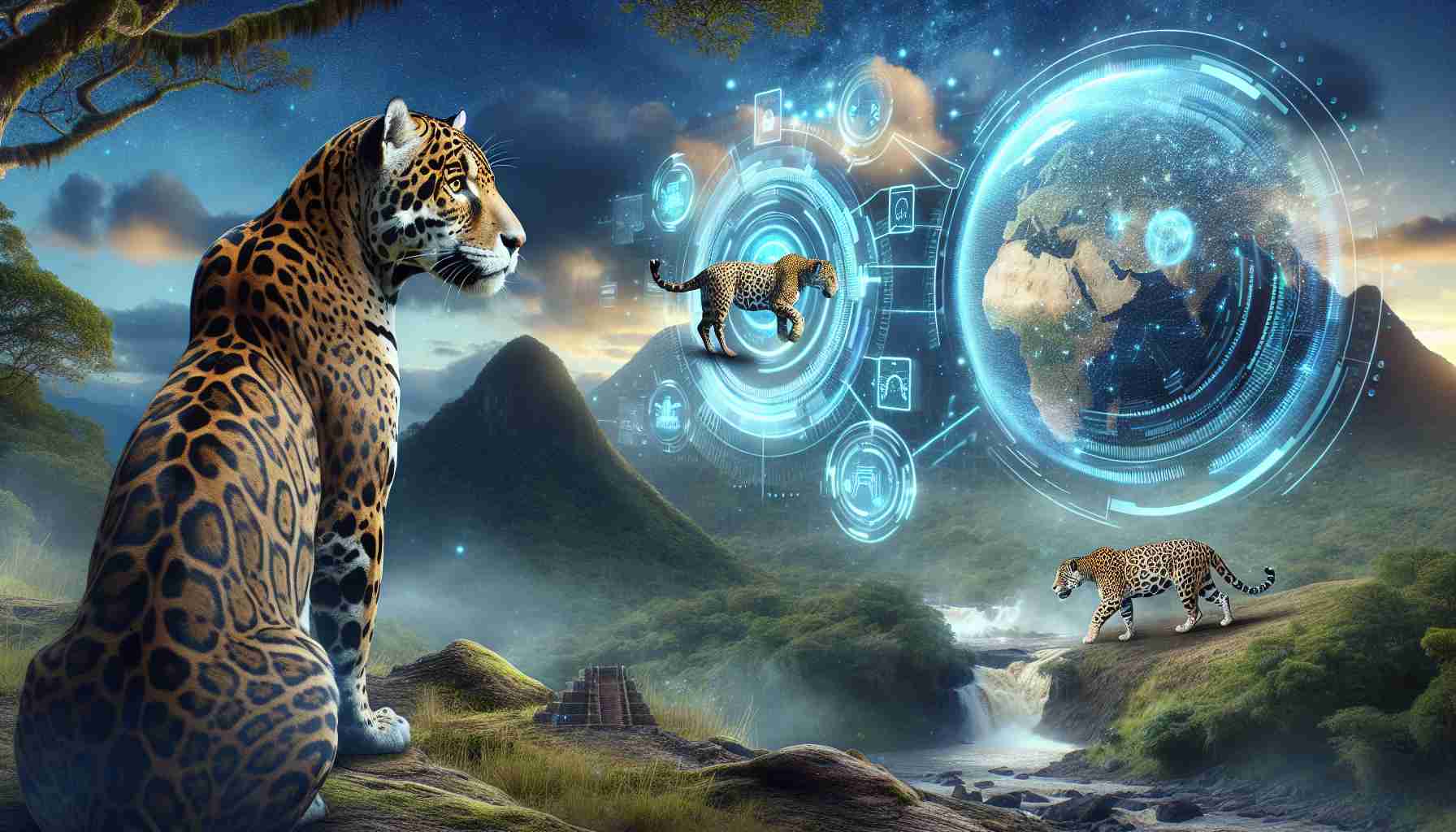In an unprecedented blend of wildlife conservation and cutting-edge technology, artificial intelligence (AI) is stepping up to help protect jaguars, the elusive yet majestic big cats of the Americas. Jaguars, now listed as near-threatened due to habitat loss and illegal poaching, may find an unlikely ally in AI-driven surveillance and tracking technologies.
The new system involves deploying advanced camera traps equipped with AI algorithms that can distinguish jaguars from other animals. This technology not only allows for more accurate population estimations but also provides real-time data to researchers and conservationists. By predicting jaguar movements and identifying potential threats, AI can significantly enhance existing conservation efforts.
Moreover, machine learning tools are now being developed to analyze these movements and predict potential human-jaguar conflicts, such as preying on livestock. This predictive capability could transform how we manage these conflicts, minimizing retaliatory killings and encouraging coexistence between humans and jaguars.
In the future, AI might also support habitat restoration. By mapping deforestation and its impact on jaguar habitats, AI can inform strategic decision-making to prioritize reforestation projects effectively.
As we look to the future, this fusion of technology and conservation offers hope for jaguars and other species struggling to survive in a rapidly changing world. Embracing these technologies might just be the key to ensuring these magnificent cats continue to roam the wild for generations to come.
AI and Jaguars: A Technological Path to Coexistence and Conservation
Artificial intelligence, a cornerstone of modern innovation, is now playing a crucial role in wildlife conservation, particularly in the protection of jaguars in the Americas. This new frontier in conservation technology represents a compelling intersection of ecology and digital advancement. The integration of AI in monitoring and safeguarding jaguar populations not only offers immediate benefits to these iconic animals but also holds broader implications for the environment, humanity, and the global economy.
One of the most significant environmental benefits stemming from the use of AI in jaguar conservation is its potential to enhance habitat protection and restoration. By utilizing advanced camera traps and AI-driven analytics, conservationists can accurately track jaguar populations and pinpoint areas where habitat loss is critical. This data is invaluable for informing strategic decisions about which areas to prioritize for reforestation efforts, directly contributing to biodiversity conservation and climate stabilization. Healthy habitats not only support wildlife but also maintain ecosystem services crucial for human survival, such as clean air and water.
From a humanistic perspective, AI’s role in predicting and managing human-jaguar conflicts can have a profound impact on community relations and livelihoods. Livestock predation often leads to retaliatory killings of jaguars by affected farmers. By using machine learning tools to predict movements and potential predatory behavior, communities can mitigate these conflicts proactively, employing measures that safeguard both their livestock and the jaguars. This approach promotes coexistence and reduces tensions, highlighting how technology can bridge the gap between human needs and wildlife conservation.
Economically, AI-driven conservation strategies can lead to cost-effective resource allocation. Traditional methods of monitoring wildlife populations and their habitats are labor-intensive and expensive. By automating these processes through AI, conservationists can allocate resources more efficiently, potentially freeing up funding for other critical conservation efforts. Furthermore, fostering healthy jaguar populations may enhance ecotourism, creating sustainable economic opportunities for local communities.
Looking towards the future, the success of AI in jaguar conservation could set a precedent for the global application of technology in biodiversity protection. As climate change and habitat destruction continue to threaten numerous species, AI offers a scalable solution that can be adapted to diverse ecological contexts worldwide. This technological fusion represents a hopeful trajectory for ensuring that future generations inherit a world where humans and wildlife can thrive together.
In the grand scheme of things, AI’s contribution to jaguar conservation exemplifies a broader shift toward intelligent, data-driven approaches to global challenges. By embracing this synergy between technology and nature, humanity can better navigate the complexities of wildlife conservation, ultimately preserving the planet’s rich biodiversity for centuries to come.
Revolutionary AI Techniques Aiding Jaguar Conservation: Unveiling New Insights and Innovations
The Power of AI in Jaguar Conservation
Artificial intelligence (AI) is revolutionizing the landscape of wildlife conservation, offering unprecedented tools and methods to aid in the protection of jaguars, the emblematic big cats native to the Americas. As jaguars face increasing threats from habitat destruction and poaching, AI presents innovative solutions to bolster conservation strategies and promote sustainable coexistence.
Features and Innovations
A pivotal feature of this AI-driven conservation effort is the use of advanced camera traps embedded with robust AI algorithms. These traps possess the capability to differentiate jaguars from other wildlife, capturing critical data for ecological studies. Such accurate recognition allows for precise population estimations and facilitates the monitoring of individual animals in real-time, offering a clearer understanding of their movements and behaviors.
Machine learning tools stand at the forefront of this technological advancement. By analyzing vast data sets of jaguar activities, AI systems can predict movement patterns and potential human-animal conflicts. These insights are vital in preemptively addressing incidents where jaguars may prey on livestock, thereby reducing retaliatory measures by local communities.
Use Cases and Strategic Implementation
Beyond monitoring, AI plays a crucial role in habitat restoration efforts. By meticulously mapping deforestation and analyzing its repercussions on jaguar environments, conservationists can better strategize reforestation initiatives. This data-driven approach ensures that restoration projects are both effective and tailored to the needs of preserving critical habitat corridors essential for the survival of these majestic cats.
Limitations and Challenges
While AI offers transformative potential, it is not without its limitations. The effectiveness of AI in conservation is contingent upon the availability of high-quality data and continuous monitoring. Additionally, there are challenges related to the deployment of these technologies in remote and rugged terrains where jaguars often roam.
Sustainability and the Future
AI’s integration into wildlife conservation embodies a significant leap towards sustainable practices. It aligns with broader environmental goals by promoting ecological balance and reducing human-wildlife conflict, paving the way for harmonious coexistence. In the years to come, we can anticipate further advancements in AI technology, offering even more refined tools for conservationists globally.
Insights and Predictions
With continuous improvements in AI technologies, future conservation efforts may witness even greater precision in predictive models and threat detection capabilities. As conservationists harness these insights, they could dramatically enhance the effectiveness of wildlife preservation strategies, particularly for species teetering on the brink of extinction.
By embracing AI and its vast potential, the hope is to secure a future wherein jaguars and other imperiled species can continue to thrive in their natural habitats, ensuring their presence in the wild for generations to behold.
For more information on cutting-edge technology in conservation, visit Conservation International.














